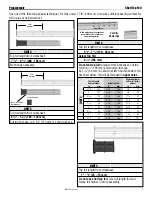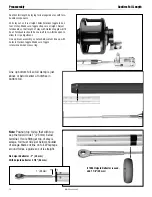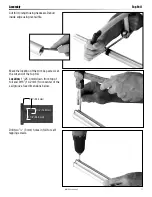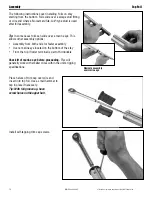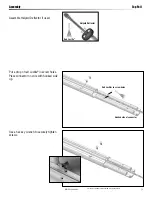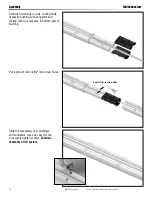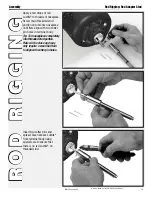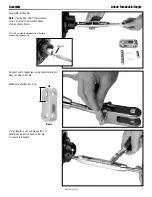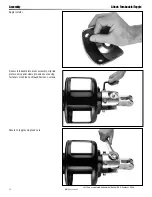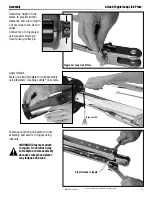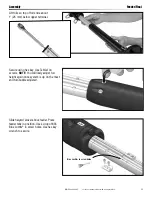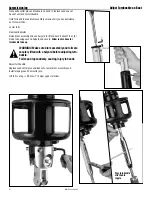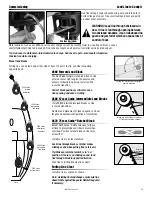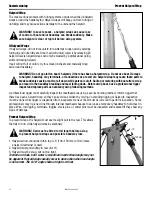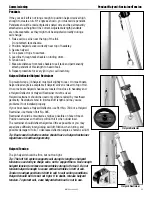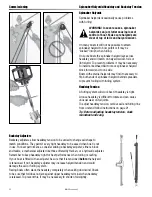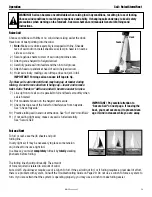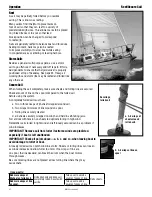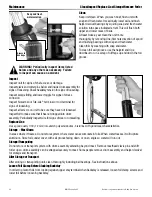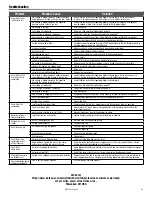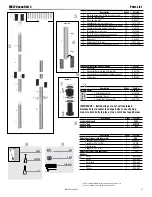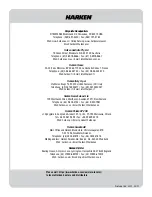
23
MKIV Ocean Unit 3
1. Halyard swivel should be within top 4–6" (100–150 mm) of foil unless
a halyard restrainer is used.
2. Halyard must pull slightly to rear (8–10°).
3. Halyard must be snug, but not too tight.
Test furler at dock, but if water is smooth an incorrect lead angle may not
be apparent. Halyard wraps usually occur in wave action when lead angle
is not correct. The 8–10° angle shown at right is critical.
Prevent Halyard Wrap
To prevent wraps, the halyard must exert a slight pull to the rear. This allows
the foils to turn while halyard remains stationary.
WARNING! Sail must be fitted to foil length before using
to prevent halyard wraps and possible headstay loss.
Halyard Wrap
The most serious problem with furling systems occurs when the jib halyard
wraps around the headstay foil. Halyard wraps will keep you from furling or
unfurling and may cause serious damage to the unit and the halyard.
WARNING! In severe cases, a halyard wrap can cause loss
of control of boat and/or headstay can break suddenly. Make
sure halyard is clear of top foil before using system.
A professional rigger must carefully inspect the masthead area using a secure hoisting method. Inform rigger that
there has been a halyard wrap so they can avoid an accident by relying on standing rigging or halyards. Inspection
must be done while rigger is suspended from a separate crane or mast must be lowered to perform inspection. Some
professionals may rig a new line through internal masthead sheaves to serve as a temporary headstay to hold mast in
place. Wire, rod rigging, terminals, toggles, clevis pins, or cotter pins must be inspected and replaced if they show any
signs of damage.
WARNING! Do not go aloft on boat’s halyards if there has been a halyard wrap. Do not use boat. Damage
to halyard, headstay, stay terminals, or connections as a result of a halyard wrap may cause these parts to
break suddenly causing mast to fall down while person is aloft. Sailing or motoring with boat after a wrap
can result in the headstay breaking and mast falling down. Before using boat, have a professional rigger
inspect and replace parts as necessary using following methods.
If Halyard Wraps
If halyard wraps, do not force unit to turn. Attempt to open sail by carefully
furling in and out a little at a time. If sail will unfurl, lower it by releasing jib
halyard. Severe halyard wraps can only be cleared by a professional going
aloft and freeing halyard.
If sail will not furl or unfurl, try to remove jib sheets and manually wrap
sail around headstay.
8–10°
100–150 mm
Commissioning
Prevent Halyard Wrap

